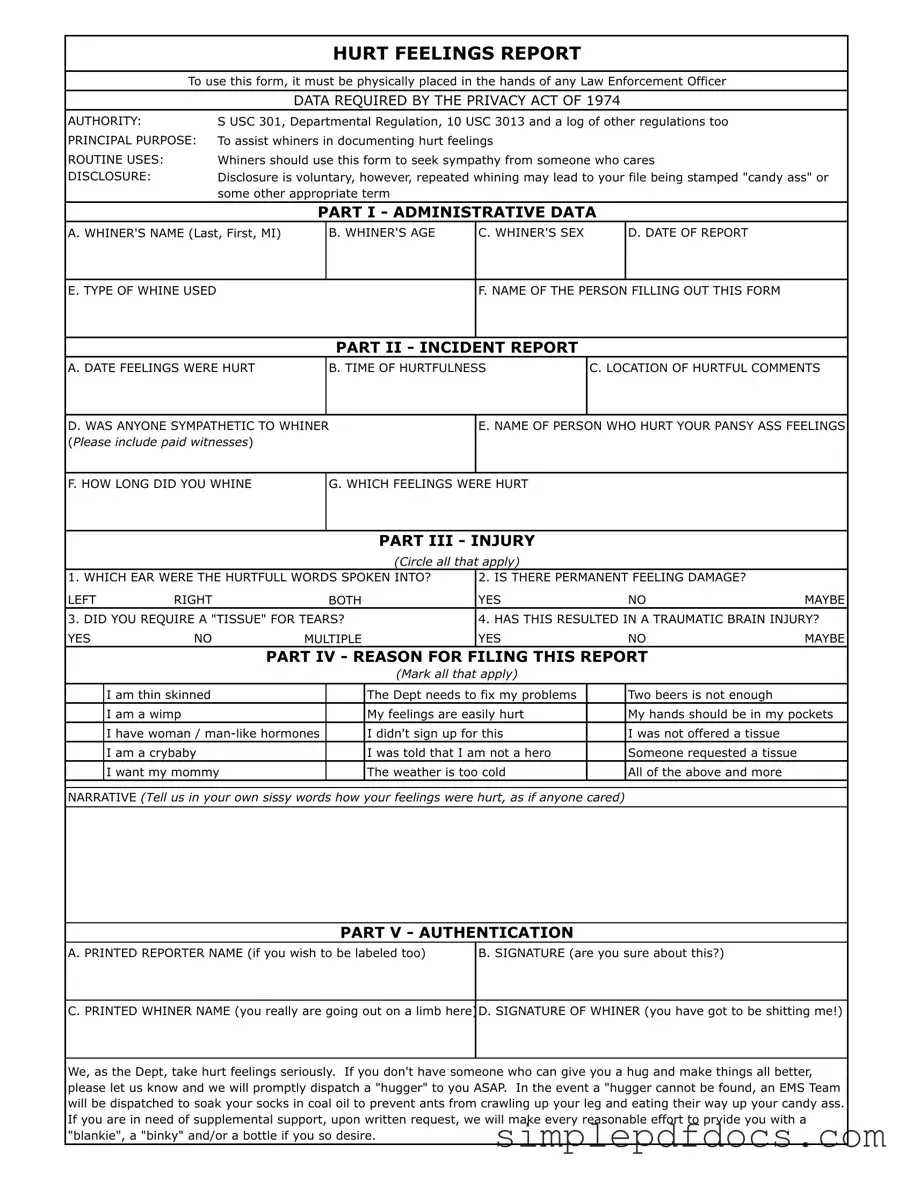The Hurt Feelings Report form, while often met with humor and skepticism, serves a unique purpose within certain contexts. Designed for individuals who feel emotionally wounded, this form provides a structured way to document grievances stemming from hurtful comments or actions. It requires specific information, including the name and age of the individual filing the report, the date and time of the incident, and details about the person who allegedly caused the emotional distress. The form even prompts the user to reflect on the nature of their feelings, asking whether they experienced permanent damage or required a tissue for tears. While the disclosure of information is voluntary, the form humorously warns that repeated submissions might lead to a rather unflattering label. Furthermore, it includes a narrative section where individuals can express their feelings in their own words, emphasizing the personal nature of the experience. The report concludes with a light-hearted note about the department's commitment to addressing hurt feelings, offering the possibility of a "hugger" for emotional support or even a more unconventional remedy. Through its blend of seriousness and satire, the Hurt Feelings Report form invites reflection on emotional well-being while engaging with the complexities of human interactions.
